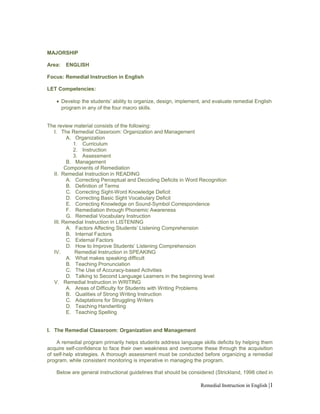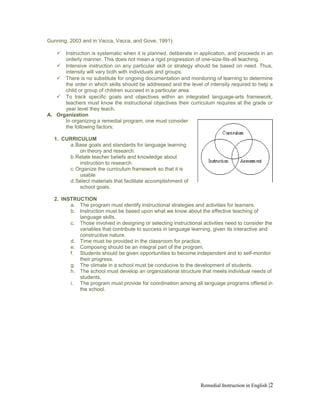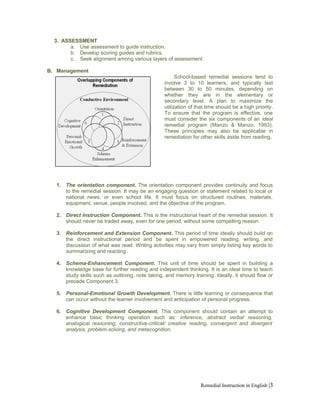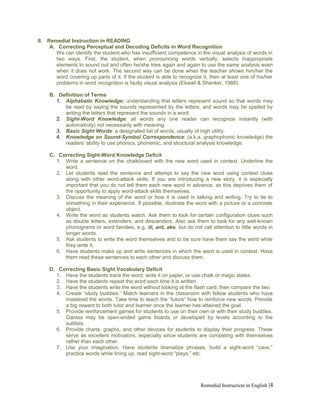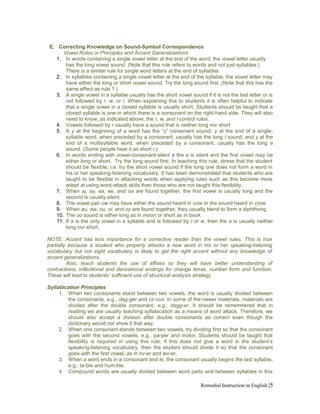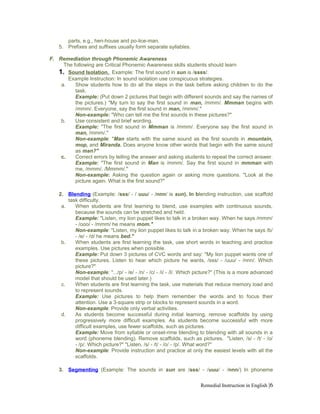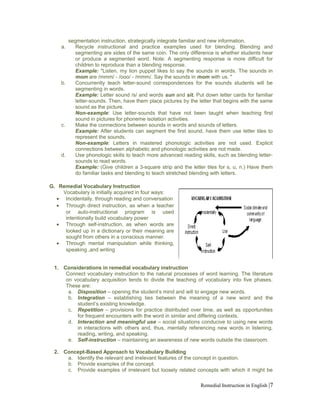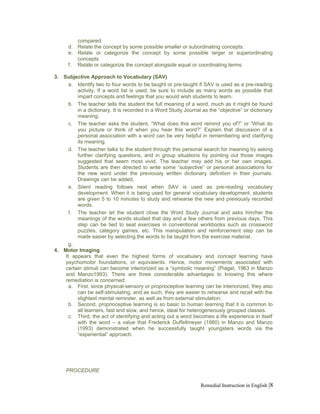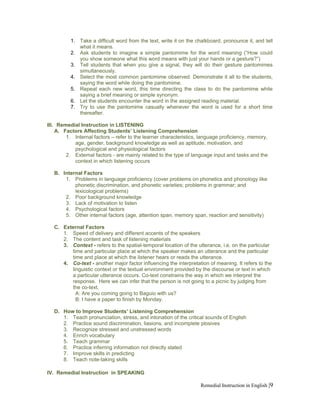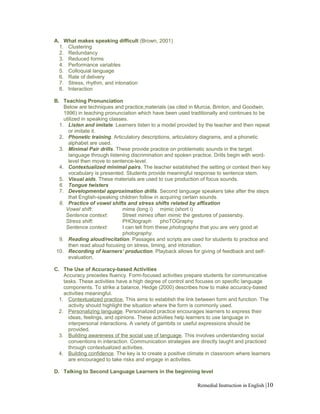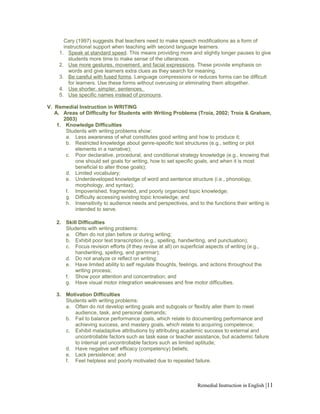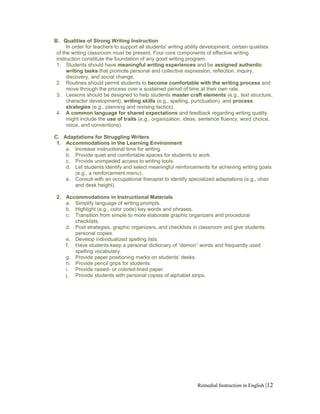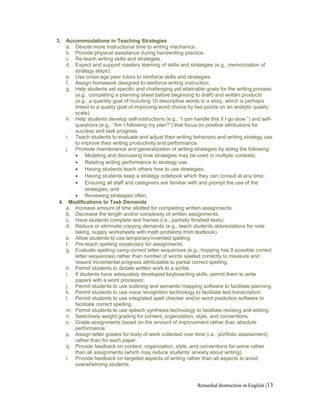FREE LET REVIEW
REVIEW FOR LICENSURE EXAMINATION FOR TEACHERS (LET)
Content Update on Linguistics
A. CHARACTERISTICS OF LANGUAGE
1. THE STRUCTURALIST VIEW: Believe that language can be described in terms of observable and verifiable data, and the behavior of the language as it is used. They describe language as regularities and patterns, or rules in language structure. To them, language is a system of speech sounds, arbitrarily assigned to the objects, state of concepts to which they refer, used for human communication.
CONTEXT:
A. Language is a means of communication: It is an interchange and interaction between human of their ideas, beliefs, or feelings. Language gives shape to peoples’ thought, guides and controls their entire activity.
B. Language is primarily vocal: It is made up of vocal sounds only produced by speech apparatus in the human body. Writing is only the graphic representation of the sounds of tha language. While most languages have writing systems, a number of languages continue to exist, even today in the spoken form (utterance), without any written form. (Speech is primary / Writing is secondary). Language is speech and is considered as the primary medium, thus speech priority is necessary in language teaching.
C. Language is a system of systems: Language is not a disorganized combination of the linguistic elements. Sounds are arranged in certain fixed or established systematic order (Phonological – Morphonological units) to form meaningful units or words (Morphonological - Semantic units). In like manner, words are also arranged in a particular system to generate acceptable meaningful sentences (Morphonological – Semantic – Syntactic units) Sentence consists of words stings that do not violate the established convention in grammar.
Language is a structurally related elements for encoding meaning where these elements combined is cognizant to linguistic rules.
· Phonemes (Scientific study of Sounds)
· Morphemes (Study of Word Formation)
· Semantics (Study of Meanings)
· Tagmemes / Syntax (Study of Phrases and Sentences/Clauses Formation)
D. Language is arbitrary: There is no inherent relation between the words of a language and their meaning as ascribed on the ideas conveyed by them. The is no interrelational correspondence between the structure of a word and the thing it stands for. (e.g. There is no reason why an animal that flies is called ibon in Filipino, pajaro in Spanish, and bird in English) Selection of words in languages is purely accidental in conception that native language speakers have agreed on. Through time, reference to such words has been conventionally established and cannot easily be changed.
The language is arbitrary means that the relationship between the words and the things they denote is merely conventional, i.e. native speakers of English, in some sense agreed to use the sound / dɔɡ / dog in English because native speakers of English want it to be.
REFERENCES:
Linguistics Structuralism / Descriptivism
· Ferdinand de Saussure (Synchronic Linguistics / Parole de Langue / Semiology)
· Roman Osipovich Jakobson (Stuctural Analysis of Language)
· Franz Boas (Analytical Technique in Language)
· Leonard Bloomfield (Language Description and Arbitrariness)
· Edward Sapir / Benjamin Lee Whorf (Linguistic Determinism / Sapir-Whorf Hypothesis)
· Noam Chomsky (Generative – Transformational Grammar)
· London School / John Rupert Furth (Prosodic Analysis)
· Prague Linguistic Circle
· Claude Levi’ Strauss (Sign System)
2. THE TRANSFORMATIONALIST VIEW: Believes that language is a system of knowledge made manifest in linguistic form and considered innate and universal.
CONTEXT:
A. Language is a mental a phenomenon: It is not mechanical. (see: Psycholinguistics)
B. Language is innate: The presence of language acquisition device (LAD) predisposews all normal children to acquire language in a short period of time.
C. Language is universal: In a sense that all normal children the world over acquire a mother tongue, and in a highly abstract level, it share the similar key features in all human languages. (see: pidgin / creole / L1-L2)
D. Language is creative: It enables us to produce and understand sentences we have not heard nor used before.
REFERENCES:
Language Universals / Psycholinguistics
· Noam Chomsky (Universal Grammar / Linguistic Nativism / LAD: L1 and L2)
· Relational Grammar (Hjemslev: Glossematik, Reich: Tactic Pattern , Lamb: Composite-Portmateau Realization)
· Diachronic Linguistics (Philology and Language History / Port Royale Grammar)
· PIE (Proto Indo-European Languages)
· Roman Jakobson (Theory on Communicative Functions / Principal Ideas in Linguistics)
· Ferdinand de Saussure (Laryngeal Theory)
· Linguistic Relativity (Sapir – Whorf Hypothesis)
· MAK Halliday (Systemic Functional Linguistics / Children’s Grammar)
· Stephen Krashen (Monitor Model Hypothesis)
· B.F. Skinner (Verbal Behavior / Operant Conditioning)
3. THE FUNCTIONALIST VIEW: Believes that language is a dynamic system through which the members of a community exchange information. It is a vehicle for the expression of functional meaning such as expressing one’s emotions, persuading people, asking and giving information, making people do things for us.
The theory emphasizes meaning and function rather than the grammatical characteristics of language that lead to language teaching content consisting of categories of meaning and functions rather than by grammatical structures.
REFERENCES:
Pragmatics / Functional Linguistics
· C.S. Peirce / Charles Morris (Linguistic Context)
· MAK Halliday (Systemic Functional Linguistics / Children’s Grammar)
· London School (John Rupert Furth: Instrumentality of Language / Branislow Manilowski: Theory of Linguistic Functionalism)
· Austin and Searle (Communicative Grammar / Speech Act Theory)
· Filmore (Case Grammar)
4. THE INTERACTIONIST VIEW: Believes that language is a vehicle for establishing interpersonal relations and for performing social interactions between individuals. It is a tool for creating and maintaining social relations. Language teaching content, in this view is specified by patterns of exchange and interaction.
REFERENCES:
Socio-Linguistics / Linguistic Behaviorism
· C.S. Peirce / Charles Morris (Linguistic Context)
· MAK Halliday (Systemic Functional Linguistics / Grammar)
· London School (John Rupert Furth: Instrumentality of Language / Branislow Manilowski: Theory of Linguistic Functionalism)
· Austin and Searle (Communicative Grammar / Speech Act Theory)
· Jennifer Coates and George Lakoff (Gender / Male-Female Speech)
B. ACQUISITION OF A SECOND LANGUAGE
1. Behaviorist Learning Theory: Derived from a general theory of learning, the behaviorist view states that the language behavior of the individual is conditioned by sequences of differential rewards in his/her environment.
It regards language learning as a behavior like other forms of human behavior and not a product of
mental phenomenon (Structuralism). Language is learned by a process of habit formation; since it is viewed as mechanistic and as a human activity, it is believed that learning the language is achieved by building up habits on the basis of stimulus response chains. Behaviorism emphasizes the consequences of the response and argues that it is the behavior that follows a response which reinforces it, and thus helps to strenghten the association.
The process of habit formation includes the following factors:
· The child imitates the sound and patterns which he/she hears around him.
· People recognize the child’s attempt as being similar to the adult models and reinforces (reward) the sounds by approval or by other desirable reaction.
· In obtaining more of these rewards; the child repeats the sound and patterns resulting to habitual action.
· Thus forms the child’s verbal behavior; language is conditioned (shaped) until the habits coincide with the adult models.
The behaviorist claim that the three crucial elements of learning are: The stimulus, which serves to
elicit behavior; the response, triggered by the stimulus; and reinforcement, which serves to mark the
response as being appropriate or not and encourages the repetition or suppresion of the response.
2. Cognitive Learning Theory: Chomsky argues that language is not acquired by children by imitation and through a form of conditioning on reinforcement and reward. He believes that all normal beings have an inborn biological internal mechanism that makes language learning possible. Cognitivist / innatists claim that the child is born with an initial state about language which predisposes him/her to acquire a grammar of that language. The (LAD) Language Acquisition Device is what the child brings to task in the language acquisition, giving him/her an active role in language learning.
One important feature of the mentalist account of second language acquisition is hypothesis testing, a process of formulating rules and testing the same time with competent speakers of the target language.
3. Krashen’s Monitor Model: The most cited on the second language acquisition; considered as the most comprehensive and most ambitious, consisting of five central hypotheses:
Krashen’s Hypotheses Models:
A. The Acquisition / Learning Hypothesis: Claims that there are two ways of developing competence in L2:
Acquisition – the subconscious process that results from informal, natural communication between people where language is a means, not a focus nor an end in itself.
Learning – the conscious process of knowing about language and enable to talk about it; it occurs in a more formal situation where the properties of a language are taught. Langauge learning has traditionally involved grammar and vocabulary learning.
e.g. Local error (understandable) – The children is playing. Error in S-V agreement
Global error (misleading) – The cat barks. Error in logic
B. The Natural Order Hypothesis: It suggests that grammatical strucctures are acquired in a predictable order for both children and adults, that is, certain grammatical structures are acquired before others, irrespective of the langauge being learned. When a learners engages in natural communication, then the standard order below will occur.
Group 1
Present Progressive – ing (She is running.) Plural – s (These are tables.) Copula – “to be” ( The girl is in school.) |
Group 2
Auxiliary – “to be” (She is playing.) Articles – a, an, the (That’s a table.) |
Group 3
Irregular Past Forms – (She went home.) |
Group 4
Regular Past – ed (She played yesterday.) Third Person Singular – s (She plays every day.) Possessive – s ( The boy’s bag is new.) |
C. The Monitor Hypothesis: Claims that conscious learning of grammatical rules has an extremely limited function in language performance: as a monitor or editor that checks output. The monitor is an editing device that may normally operate before language performance. Such editing may occur before the nattural output or after the output via a correcting device.
Krashen suggests that monitoring occurs when there is sufficient time, where there is pressure to communicate correctly and not just convey meaning, and when the appropriate rules are known.
D. The Input Hypothesis: Krashen proposes that when learners are exposed to grammatical feartures a little beyond their current level (i.e. i + 1), those features are acquired. Acquisition results from somprehensible input, which is made understandable with the help provided by the context. If the learners receive understandable input, language structures will be naturally acquired. Ability to communicate in a second language emerges rather than directly put in place by teaching.
E. The Affective Filter Hypothesis: Filter consists of attitude to language, motivation, self confidence and anxiety. Thus learners with favorable attitude ande self confidence have a low filter which promotes language learning. Learners with a low affective filter seek and receive more input, interact with confidence, and are more receptive to the input they are exposed to. On the otherhand, anxious learners have high affective filters which prevents acquisition from taking place.
e.g. Low Affective Filter (Deep Learners) – Positive Output
High Affective Filter (Surface Learners) – Negative Output
C. INFLUENCE OF THEORIES ON LANGUAGE TEACHING
1. Applied linguists claim that theories of language learning as well as theories of language may provide the basis for particular teaching approach/method. To illustrate the linking of structuralism and behaviorism has produced the audio-lingual method (ALM), oral approach/ situational language teaching, operant conditioning approach, bottom-up text processing, controlled-to-free writing; these methods underscore the necessity of over learning, a principle that leads to endless and mindless mimicry and memorization (mim-mem). They are also characterized by mechanical habit-formation teaching done through endless practice: sentence pattens are repeated and drilled until they become habitual and automatic to minimize occurences of mistakes. Grammar is taught through analogy, hence explanations of rules are not given until the students have practiced a pattern in a variety of contexts.
2. Cognitive Learning theory has triggered the cognitive approach to learning that puts language analysis before language use and instruction by the teacher, before the students practice forms. It is compatible with the view that learning is a thinking process, a belief that underpins cognitive-based and schema-enhancing strategies such as Direct Reading Thinking Activity, Story Grammar, Think-Aloud, to name a few.
3. The functional view of language has resulted in communication-based methods such as Communicative Language Teaching / Communicative Approach, Notion-Functional Approach, Natural Approach. These methods are learner-centered, allowing members to work in pairs or groups in information gap tasks and problem-solving activities where such communication strategies as information sharing, negotiation of meaning, and interaction are used.
4. The view that language learning is both cognitive and affective has given rise to a holistic approach to language learning or whole-person learning which spawned humanistic techniques in language learning and Community Language Learning. In these methods, the whole person including his/her own emotions and feelings as well as language knowledge and behavior skills become central to teaching. The humanistic approach equips learners “vocabulary for expressing their feelings, for sharing their values and viewpoints with others, and developing a better understanding of their feelings and needs.”
Pedagogical Implications of the Monitor Model:
A. Teachers must continuously deliver at a level understandable by learners.
B. Teaching must prepare learners for real life communication situations. Classroom must provide conversational confidence so that when in the outside world, the students can cope with situations and continue learning.
C. Teachers must ensure that learners do not become anxious or defensive in language learning. The confidence of a language learner must be encouraged in a language acquisition process. Teachers should not insist on learners conversing before they feel comfortable in doing so; neither should they correct errors and make negative remarks that inhibit learners in learning. They should devise specific techniques to relax learners and protect their egos.
D. Formal grammar teaching is of limited value because it contributes to learning rather than acquisition. Only simple rules should be learned.
E. Teachers must create an atmosphere where learners are not embarassed by their errors. Errors should not be corrected when acquisition is occuring. Error correction is valuable when learning simple rules and could create an adverse effect, resulting to anxiety and inhibitions.
F. Teachers should not expect learners to learn late structures early.
D. LINGUISTIC CONCEPTS
Scope of linguistic Studies:
1. Phonology: Is the scientific study on the combination of sounds into organized units of speech, the combination of syllables and larger units. It describes the sound system of a particular language and distribution of sounds which occur in that language. Classification is made on the basis of the concept of the phoneme.
Phonology is the study of the sound system of language: the rules that govern pronunciation. It is the component of a grammar made up of the elements and principles that determine sound patterns in a language. (see: Human language / Speech utterance)
2. Phonetics: Studies language at the level of sounds: how sounds are articulated by the human speech mechanism and received by the auditory mechanism, hoe sounds can be distinguished and characterized by the manner in which they are produced. (see Speech Sound Production and Articulation / IPA)
3. Morphology: Studies the pattern of formation of words by combination of sounds into minimal distinctive units called morphemes. It deals with the rules of combining morphemes to forem words, e.g. suffixes or prefixes are attached to single morphemes to form words.
Morphology is the study of word formation; it deals with the internal structure of words. It also studies the changes that take place in the structure of words, e.g. the morpheme go changes to went and gone to signify changes in tense and aspect.
4. Syntax: It deals with how words combine to form phrases, phrases combine to form clauses, and clauses join to make sentences. Suntax is the study of the way phrases, clauses and sentences are constructed. It is the system of rules and categories that underlies sentence formation. It also involves the description of rules of positioning elements in the sentence, such as noun phrases, verb phrases, adverbial phrases, etc.
Syntax also attempts to describe how these elements function in the sentence, i.e. the function that they perform in the sentence. E.g. The word girl has different functions in the following sentences:
a. The girl is reading a new novel. (function as a subject)
b. She gave the girl a new novel. (function as an indirect object)
5. Semantics: Deals with the level of meaning in language. It attempts to analyze the structure of meaning in a language, e.g. how words are similar or different are related; it attempts to show these inter-relationships through forming categories. Semantics accounts for word, phrase, and sentence meaning.
6. Pragmatics: Deals with the contextual aspects of meaning in particular situations. Pragmatics is the study of how language is used in real communication. As distinct from the study of sentences, pragmatics considers utterances – those sentences which are actually uttered by speakers of the language. E.g. dynamite: explosive device (noun - semantics ) / dynamite: amazing, great (adjective - pragmatics)
7. Discourse: Study of large portions of language which are bigger than a single sentence. At this level, inter sentential links form a connected or cohesive text are analyzed.
PHONOLOGY
A. Phoneme is a distinctive, contrasted sound unit, eg. /m/, /æ/, /n/. These distict sounds enter into combination with others to form words, eg. /mæn/ - man.
Phoneme is the smallest unit of sound of any language that causes a difference in meaning. It is a phone segment that has a contrastive status. The basic test for sound’s distinctiveness is called minimal pair test.A minimal pair consists of two forms with distinct meaning that differ by only one segment found in the same position in each, for example, [ sΙp ] – sip and [ zΙp ] – zip form a minimal pair and show that the sounds [ s ] and [ z ] contrast in English; hence they are separate phonemes /s/ and /z/.
B. Allophones are variants or other ways of producing a significant sound or a phoneme. These are phonetically similar and are frequently found in complementary distribution. For example, the systematic variations of /t/ are:
/t/ in top – aspirated [ ђ ] th;
/t/ in stop – released [ t ];
/t/ in pot – unreleased [ t ]
C. The most basic division among sounds is into two major classes; vowels and consonants.
Vowels – are produces with little obstruction in the vocal tract and are generally voiced. The quality of vowels are determined by the particular configuration of the vocal tract in the production of that sound. They are described in terms of the following physical dimensions: tongue height, frontness, lip rounding, tenseness. Different parts of the tongue is raised or lowered. The lips could be spread or pursed. The passageway which the air travels, however is never narrow as to obstruct the free flow of the airstream.
Consonants – are produced with some restrictions or closure in the vocal tract as the air from the lungs is pushed through the glottis out the mouth. The airflow is either blocked momentarily or restricted so much that noise is produced as air flow pass the constriction. Consonants are described in terms of physical dimensions: place of articulation, manner of articulation, voicing.
D. Suprasegmentals are prosodic properties that form part of the structure of sounds no matter what their place or manner of articulation is. These properties are pitch, intonation, stress, and juncture.
Pitch – is the auditory property of a sound that enables us to placeit on a scale that ranges from low or high.
Intonation – is the rise and fall of pitch which contrast meanings of words / sentences. It is the pitch movement in spoken utterances that is related to differences in the word meaning, but serves to convey information of a broadly meaningful nature such as completeness or incompleteness of an utterance. It refers to the pitch contours as they occur in phrases and sentences.
E.g. Anna is a linguist. – end pitch (falling)
Anna is a linguist? – end pitch (rising)
Stress – is a property of a syllable rather than a segment. It is a cover term for combined effect of pitch, loudness, and length – theresult of which is vowel prominence. It refers to the relative pprominence of syllables. The syllable thyat receive the most prominence is referred to as primary stress. To produce a stress syllable, one may change the pitch (usually by raising it), make the syllable louder, or make it longer.
Juncture – refers to the pauses or breaks between syllables. It refers to the transition between sounds. The lack of any real break between syllables of words is referred to as close juncture; plus juncture or open juncture is used to describe a brerak or pause between syllables in the same word or adjacent word.
E.g. nitrate – night rate
why try – white rye
blackbird – black bird
I scream – ice cream
tenacious – tennis shoes
scramble – ice crumble
ketsup – catch up
MORPHOLOGY
A. Morpheme is a short segment of language that meets three criteria:
a. It is a word or part of a word that has meaning
b. It cannot be divided into smaller meaningful parts without violation of its meaning or without meaningless remainder.
c. It recurs in different words with a relatively stable meaning.
The classifications of morphemes are as follows:
a. Root – Base form / simplest unit
b. Stem – Affixes (prefix, suffix, interfix, circumfix) / Inflections (numbers, tenses, possessives, degrees of comparison)
c. Word – Full stretch morpheme / Function words
The word unhappily has 3 morphemes: {un-}, {happy}, {-ly}, while the word spaghetti is a
single morpheme.
B. The types of morphemes are free , bound, inflectional, and derivational morphemes.
Free morphemes – are those that can stand independently. E.g. {happy} in unhappy, {like} in dislike, {boy} in boyhood. These morphemes can also occur in isolation; e.g. {happy}, {like}, {boy}
Bound morphemes – are those that cannot stand on their own as independent units. They are always attached to free morphemes or a bound form; e.g. {un-}, {-ly}, {dis-}, {-hood}. Such morphemes are also called affixes.
Inflectional morphemes – are those that never change the form class of the morpheme or words to which they are attached. These are always attached to complete words; they are close-ended set of morphemes – English has only 8 inflectional morphemes.
Eight (8) Inflectional Morphemes
- s third person singular present tense She write-s a recipe.
- s plural nouns She wrote recipe-s.
- ‘s possessives Anne-’s recipe book is new.
- ed past tense regular verb She cook-ed at home.
- en past participle She has eat-en the spaghetti.
- ing progressive She is cook-ing spaghetti.
- er comparative degree This is short-er than that.
- est superlative degree This is the short-est route.
Derivational morphemes – are those that are added to root morphemes or stem to derive new words. They useally change the form class of the word to which they are attached; they are open- ended, they are potentially infinite in number.
E.g. form + {-al} – formal + {-ize} – formalize (interfix and suffix)
care + {-ful} – careful + {-ly} – carefully (interfix and suffix)
fortune + {-ly} – fortunately + {un-} unfortunately (prefix and suffix – circumfix)
C. Word – Formation Process
Derivation: This involves the addition of a derivational affix, changing the syntactic category of the item to which it is attached. E.g. orient (V) – orientation (N) / beauty (N) – beautiful (Adj)
Category Extention: This involves the extention of a morpheme from one syntactic category to another. E.g. chair (N) – chair (V) / fast (Adj) – fast (V)
Compounding: This involves creating a new word by combining two free morphemes. E.g. drug + store – drugstore / bitter + sweet – bittersweet
Root Creation: is a brand new word based on no pre-existing morphemes. E.g. Kodak / Frigidaire
Clipped Form: Is a shortened form of a pre-existing morpheme. E.g. brassiere – bra / telephone – phone
Blend: Is a combination of parts of two pre-existing forms. E.g. smoke + fog – smog / motor + hotel – motel
Back Formation: are words created based on its assumed morphophonemic origin. E.g sister (singular) – sisters (plural) / brother (singular) – brethren (plural) { brothers }: back formation
Acronym: Is a word formed from the first letter(s) of each word in a phrase. E.g. NASA – National Aeronautics and Space Administration / SARS – Severe Acute Respiratory Syndrome.
Abbreviation: Is a word formed from the names of the first letter of the prominent syllables of a word. E.g. microphone – mic / Master of Ceremony – Emcee / television – TV
Proper Name: This process forms a word from proper name. E.g. hamburger – Hamburg, Germany / sandwich – Earl of Sandwich
Folk Etymology: This process forms a word by substituting a common native form for an exotic (often foreign) form. E.g. cockroach – cucuracha (Spanish for wood louse)
D. Morphophonemic Process
Assimilation: is a process that results from a sound becoming more like another related sound in one or more of its phonetic characteristics; a process in which segments take on the characteristics of neighboring sounds. (referential sound of the prefix - in)
E.g. in – im + possible – impossible
in + tolerable – intolerable
ing – in /iŋ/+ complete – incomplete / credible – incredible
Dissimilation: is a process that results in two sounds becoming less alike in articulatory or acoustic terms; a process in which units that occur in some contexts are lost in others. E.g. libary – library / govenor – governor / govement – government / sovrenty – sovereignity / comftable – comfortable
Deletion: is a process that removes a segment from certain phonetic contexts. It occurs in everyday rapid speech. E.g. blind man [ blaIn mæn ]
Epinthesis: is a process that inserts a syllable or a nonsyllabic segment segment within an existing string of segment. E.g. minded [ maIndId ]
Metathesis: is a process that reorders or reverses a sequence of segments; it occurs when two segments in a series switches places. E.g. ask – aks / ruler – lurer / violet – viloyet
SYNTAX
A. Syntactic Structures accounts the formation of sentences and clauses.
Stucture of Predication – has two components: a subject and a predicate; e.g. The sun rises., Warriors fought bravely., Snow has ceased falling.
Structure of Complementation – has two basic components: a verbal element and complement; e.g. weigh the options; serve the masses, be courageous
Structure of Modification – has two components: a head word and a modifier, whose meaning serves to broaden, qualify, select, change, or describe, or in some way affect the meaning of the head word; e.g. honest officials, canned goods, notoriously famous
Structure of Coordination / Correlation – has two basic components: equivalent grammatical units and joined often but not always by coordinating / correlative conjunctions; e.g. pins and needles , peace not war, neither happy nor sad
SEMANTICS
A. Semantics is the linguistic category accounted for the word, phrase, and sentence meaning.
B. The types of semantics based on structural analysis:
Lexical ambiguity – refers to the characteristics of a word that has more than one sense. E.g. The English word fly is ambiguous because it has more than one sense: referential to an insect or an activity of flight, a zipper on a pair of pants, ora baseball hit into the air with a bat.
Syntactic ambiguity – refers to the characteristics of a phrase that has more than one meaning. E.g. French literature teacher can mean a teacher of French literature, or a literature teacher who is French.
Synonymy – refers to words having the same sense; that is they have the same values for all of their semantic features. Big and Large; conceal and hide, stubborn and obstinate are synonymous in English.
Hyponymy – refers to sense relation of a word that contains the meaning of another word; the contained word is known as the superordinate. For example, chuahua contains the meaning of dog, therfore a chuahua is a hyponymy of the superordinate dog.
Antonymy – refers to sense relation of two words which are different both in form as well as meaning. An antonym conveys the opposite sense (binary antonyms), e.g. single- married, good – bad. They are also words whose meaning differ only in the value for a single semantic feature; e.g. rich – poor, rich is marked [+ wealth]and poor is marked [- wealth]; dead – alive; dead is marked
[- living] and alive is marked [+ living].
Gradable antonyms – are words that describe opposite ends of a continous dimension, e.g. hot and cold. Not everything that can be hot or cold is in fact hot or cold. A liquid for example could be warm or cool.
Homonymy – refers to sense relation in words with same phonetic form but different in meaning, e.g. bat as nocturnal mammal, and bat as equipment used in baseball or softball.
Co-reference – refers to the sense relation of two expressions that have the same extralinguistic referent. In the sentence Neptune is now considered as the farthest planet from the sun in the solar system., are co-referential because they these refer to the same extralinguistic objects.
Anaphora – is a linguistic expression that refers to another linguistic expression; e.g. The tsunami was devastating because it killed thousands of people. The pronoun (it) is used anaphorically to refer to the tsunami. (see: reflexive pronouns)
Deixis – refers to the characteristics of an expression that has one meaning but can refer to different entities within the same context of utterance. Deictic expressions have a pointing function. Examples of deixis are you, I, she (personal pronouns); here there, right, left (expressions of place); this, that, those, these (demonstrative pronouns); now, yesterday, today, last year (time expressions).
Entailment – is a proposition (expressed in a sentence) that follows necessarily from another sentence. A sentence entails another if athe meaning of the first includes the meaning of the second; it is also called paraphrase. For example, the sentence, John had a fatal accident., entails that John died; since it is impossible to figure in a fatal accident without the loss of life.
Presupposition – refers to a proposition (expressed in a sentence) that is assumed to be true in order to judge the truth or falsity of another sentence. It also refers to the truth relation between two sentences; one sentence presupposes another if the falsity of the second renders the first without a truth value; e.g. The sentence, The king of Iceland is dead., presupposes that there exist (is) a king of Iceland. The first sentence presupposes the second sentence because if the second sentence is false, then the first sentence has no truth value.
PRAGMATICS
A. Pragmatics centers on the contextual aspects of meaning in particular situations. It is the study of how language is used in real communication.
Speech act theory – every utterance of speech constitutes some sort of act (promising, apologizing, threatening, warning, etc.) Every speech act consists of three separate acts:
a. Locutionary force: is an act of saying something; it is a description of what a speaker says, e.g. I promise to pay you today.
b. Illocutionary act / force: is the act of doing something; it is what the speaker intends to do by uttering a sentence, e.g. In the sentence, I promise to pay you today., the illocutionary force is promising.
c. Perlocutionary force: is an act affecting someone (i.e., the listener); it is the effect on the hearer of what aspeaker says. The act in the cited example could either make the hearer / listener happy or relieved, or even skeptical or doubtful.
B. Implicatures refer to statements that imply a proposition that is not a part of the utterance and does not follow a s necessary sequence of the utterance. For example: Dan says to his wife Nita, “Uncle Ernie is driving us to Tagaytay.”,and Nita responds, “I’d better take tranquilizers.” Nita’s utterance raises the implicature that uncle Ernie must be a fast, reckless driver.
C. Conversational Maxims are rules that are observed when communication takes place in a situation where people are co-operative. When people communicate, they assume that the other person will be cooperative and they themselves wish to cooperate.
In the Cooperative Principle, the following maxims or rules govern oral interactions:
a. Maxim of quantity – a participant’s contribution should be as informative as possible – Give the right amount of information, neither less nor more than what is required.
b. Maxim of quality – a participant should not say that which is false or that which the participant lacks evidence – Make your contribution essential such that it is true; do not say what you know is false or for which you do not have adequate evidence.
c. Maxim of relation – a participant’s contribution should be related to the subject of the conversation – Be relevant.
d. Maxim of manner – a participant’s contribution should be direct, not obscure, ambiguous, or wordy – Avoid obscurity and ambiguity; be brief, orderly, and concise.
